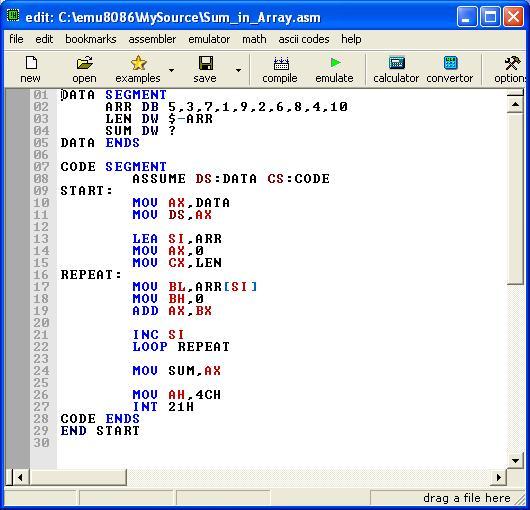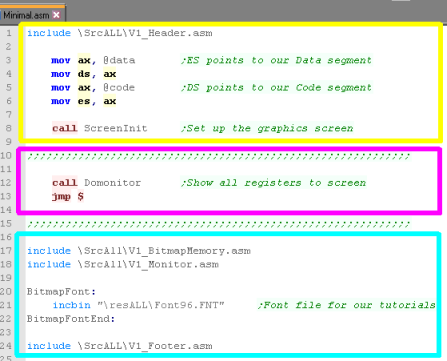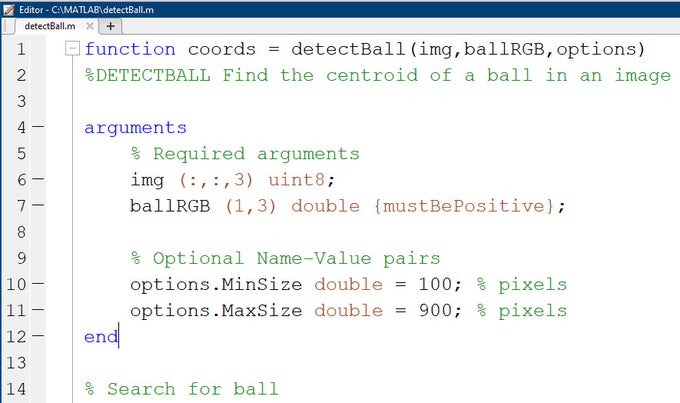

- Emu8086 options for mac how to#
- Emu8086 options for mac install#
- Emu8086 options for mac android#
- Emu8086 options for mac software#
`xcrun -sdk macosx -show-sdk-path` -e _start -arch arm64 Ld -macosx_version_min 11.0.0 -o HelloWorld HelloWorld.o -lSystem -syslibroot Here is the makefile, the command to assemble the source code is simple, then the command to link is a bit more complicated.

Svc 0 // Call MacOS to terminate the program Mov X16, #1 // Service command code 1 terminates this program Setup the parameters to exit the program Setup the parameters to print hello world global _start // Provide program starting address to linker X0-X2 - parameters to linux function services Assembler program to print "Hello World!" For all the gory details on these instructions and the architecture of the ARM processor, check out my book. This is changed via a command line argument to the linker.īelow is the simple Assembly Language program to print out “Hello World” in a terminal window.
Emu8086 options for mac software#
This sample Hello World program uses software interrupts to make the system calls rather than the API in the System library and so shouldn’t need to link to it. In MacOS you need to link in the System library even if you don’t make a system call from it or you get a linker error.In MacOS the program must start on a 64-bit boundary, hence the listing has an “.align 2” directive near top.The paths to the libs and includes are rather complicated and you need a tool to find them. with the option of installing lots for versions.
Emu8086 options for mac install#
When you install XCode, it installs SDKs for MacOS, iOS, iPadOS, iWatchOS, etc.

However there are a few differences of note: His version of the source code for my book, but modified for Apple M1 is available here:īoth MacOS and Linux are based on Unix and are more similar than different.

He dealt with all the differences between Linux and MacOS/iOS as well. Alex vonBelow took all of these and modified them to work with the LLVM tool chain and to work within Apple’s development environment. The command line utilities are compiled for Linux using the GNU tool set.
Emu8086 options for mac android#
My book “ Programming with 64-Bit ARM Assembly Language” contains lots of sample self contained Assembly Language programs and a number of iOS and Android samples.
Emu8086 options for mac how to#
This week, we’ll cover how to compile and run a simple command line ARM Assembly Language Hello World program. Last week, we talked about using a new Apple M1 based Macintosh as a development workstation and how installing Apple’s development system XCode also installed a large number of open source development tools including LLVM and make.


 0 kommentar(er)
0 kommentar(er)
